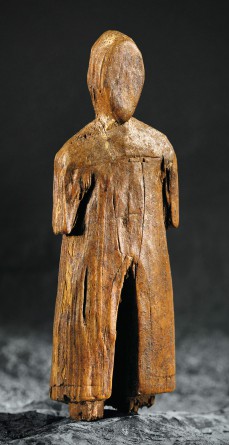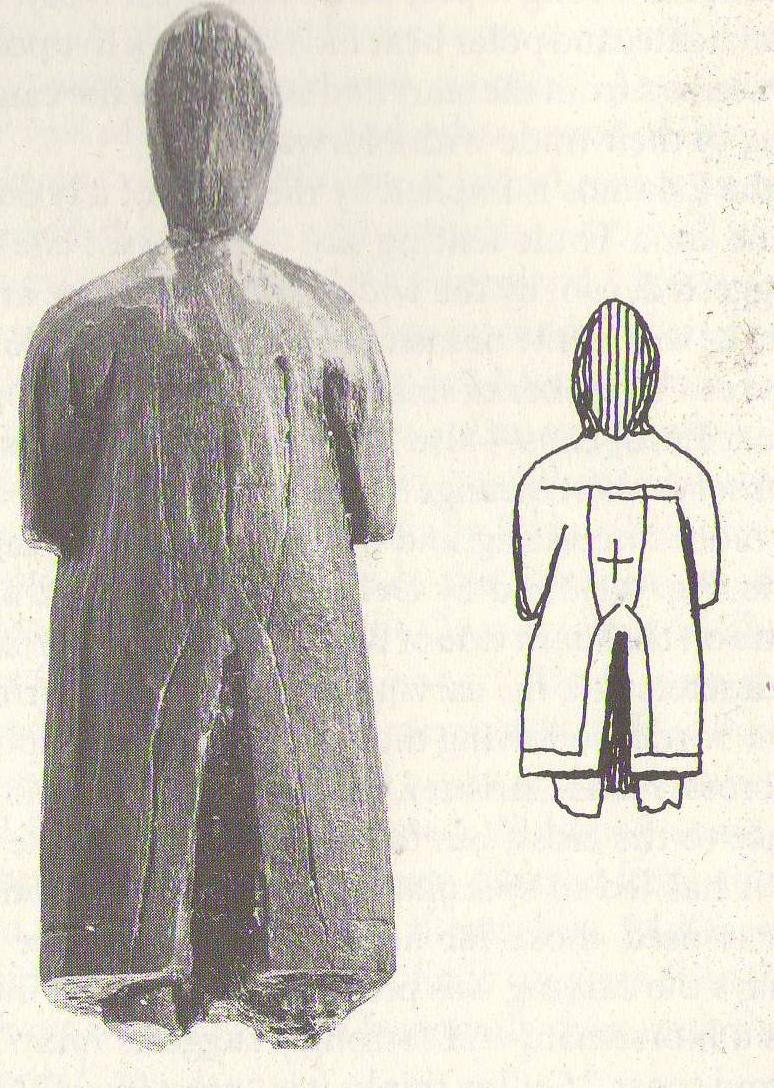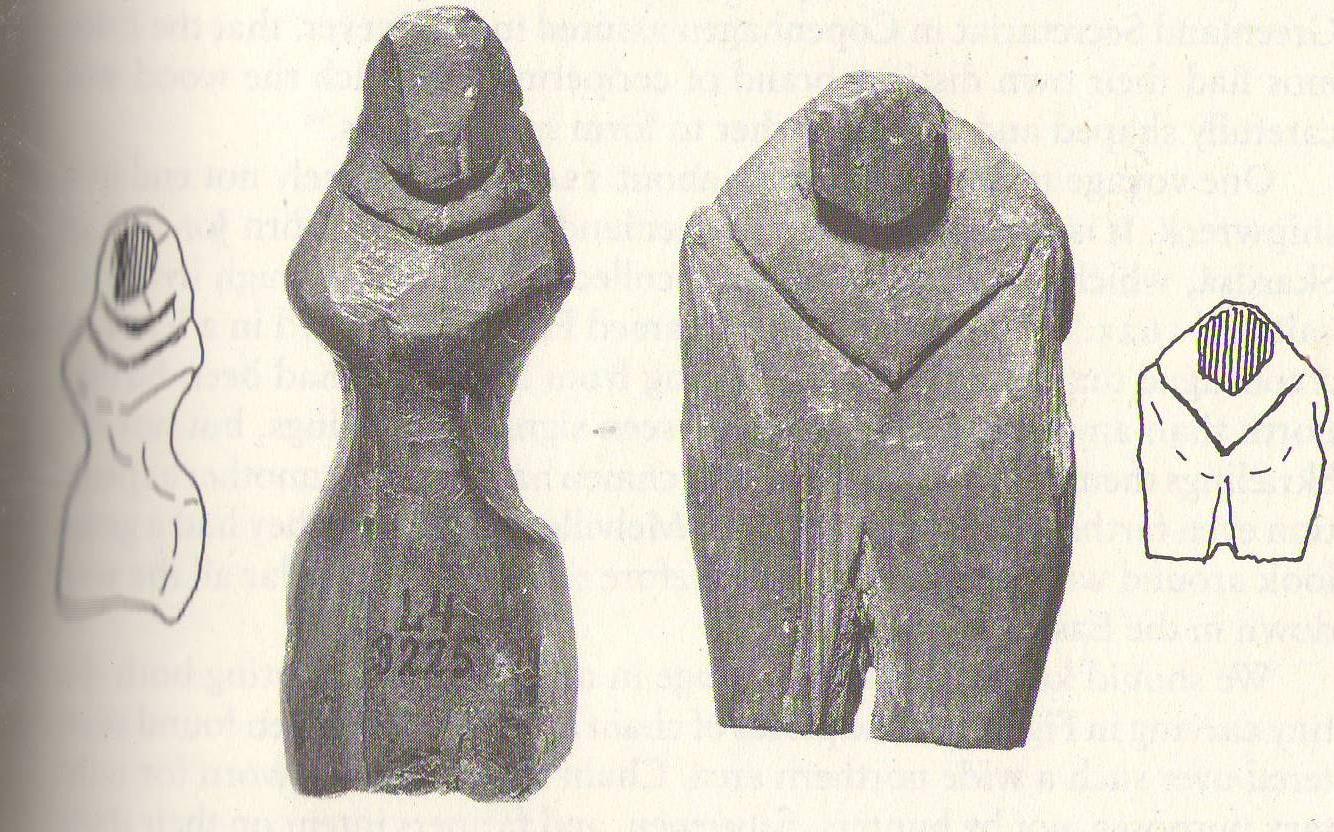Mysterious European Figure in Pre-Columbian Baffin Island December 27, 2012
Author: Beach Combing | in : Medieval , trackbackA thirteenth- or fourteenth-century Thule ivory carving from southern Baffin Island in Canada should hardly surprise anyone. After all, the Thule Inuit did dwell in this place at that time. But when Debora Sabo dug up the carving pictured above in 1972 she was understandably jolted by her discovery, so much so that she dedicated an entire article to it. The shock is the subject of the ivory statuette. Our medieval Inuit has carved a non Inuit visitor of some description to the far Canadian north: that much is certain as the carving is utterly unlike an Inuit portrayal of Inuit. But who is this individual and where does he come from? The man in question is wearing a long tunic with a border along the bottom and with a split at the bottom. There is also a cross hanging down over the chest or even emblazoned on the front of the tunic. The man is hooded, a sensible precaution on Baffin Island, and looks as if he has a fencing mask on.
The fun begins here then. Who the hell is this, messing around in Canada in the thirteenth or fourteenth century? We must be dealing with a European and the most common European visitors to this part of the world were, of course, the Greenlanders. After all, the Greenland Vikings were still at this date travelling to Canadian soil in search of timber and perhaps for reasons of trade. So was this a Greenland Viking? The wanw Kirsten A. Seaver in her superlative The Frozen Echo tries to bring together different views on the object.
Hans Christian Gullov says we should not assign too much significance to the cross, but taken together with the rest of the unusual costume, it has led to speculation about whether other Europeans besides the Norse used those far northern waters in the Middle Ages. Schledermann says the carving was probably made by an Inuk, ‘undoubtedly’ represents a Norseman, and ‘strongly suggests Inuit/ Norse contact on the Baffin Island coast’. Gullov thinks it is ‘most likely’ Norse and from the thirteenth or fourteenth century. Gwynn Jones is less specific, saying it ‘appears to represent a man dressed in European clothes.’ McGhee agrees that it was almost certainly carved on Baffin Island, because it is very different from the conventional style in which Greenland Eskimos depicted Norsemen. Guy Mary-Rousseliere notes that this kind of long, hooded robe was common enough in the thirteenth and fourteenth centuries, also in Greenland, but the horizontal line drawn just below the shoulders suggests chain mail. As for the cross, he says that Scandinavian Christians sometimes wore one on their chests in the period A.D. 1000-1300, while medieval religious or ecclesiastical costumes in Western Europe rarely included a cross, except for the religious and military orders such as the Templars.
That last word is terrifying given some of the delirium that has been written about supposed Templar trips to the New World in the wake of persecution. Seaver herself later came up with her own theory. She suggests that it is actually a Greenland woman, possibly a pregnant woman, the split at the bottom made to facilitate walking. It sounds stupid, perhaps, but compare the above with two other Inuit carvings that are almost certainly of Greenlanders. Notice particularly the woman on the left and imagine her ‘with child’.
Any other ideas? drbeachcombing AT yahoo DOT com Beach couldn’t help thinking of an Oxford friar… Surely too good to be true though.
***
31 Dec 2012: The Count writes: I am intrigued by your latest post concerning a possible Inuit representation of a Christian who made it to Canada long before any such thing officially happened. On the one hand, it’s always dodgy to take ancient artworks at face value. For example, there are at least two small Ancient Egyptian sculptures – possibly toys – that represent either a c. 1950 jet fighter or a stylized bird. All things considered, the latter possibility is infinitely more likely. Similarly, if a sculpture made by people who have a tradition of sculpting things as accurately as the sculptor is able seems to represent a certain thing that’s less improbable than a piece of technological hardware from the exact time that the gee-whiz article was written, I think we have to accept that the sculptor was very probably portraying what he saw. This figurine is to some degree stylized – it doesn’t have a face. This could represent either an attempt to portray an alien concept such as a steel helm completely hiding the wearer’s features, or the fact that this particular Inuit sculptor was lousy at doing faces. But the fact remains that it is to some degree stylized. And a stylized sculpture of a pregnant woman could not possibly include the specific detail of a split robe without also including a massively swollen belly and huge breasts, unless it was the worst sculpture ever made of anything ever. This is a superb example of skeptics trying too hard to demolish something they find improbable. This figure looks exactly like a European Christian, complete with a cross on his chest. It is by no means impossible that a European Christian might have been in that area at that time, and it’s generally accepted that the VIkings, many of whom were Christians, had arrived thereabouts some time earlier. So why not just accept that this was an accurate Inuit portrayal of a real person? On a related note, nobody has ever figured out exactly who Quetzalcoatl was, but the Incas described him as a human being with skin paler than theirs, and the to them incredibly strange feature of facial hair, who was plugging some religion about an all-powerful God who started out as a human being, went away, and would return at some future date. I am not the first person to notice that this sounds a lot like a version of Christianity delivered by an exceptionally far-flung missionary whose message got a little muddled in translation, with ultimately tragic consequences. Thanks Count!





